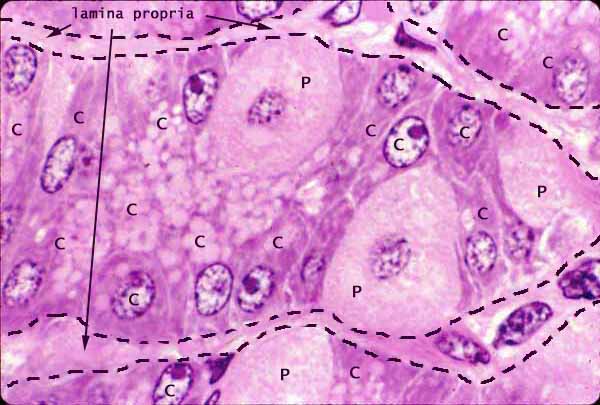


Notes
Thin section of the stomach's mucosal glands. This specimen was prepared by embedding in plastic rather than paraffin and slicing at 2µm thickness vs. 5-6 µm for routine sections.
This preparation provides adequate resolution to identify easily both parietal cells (P) and chief cells (C) which occur in the middle portion of gastric glands.
Secretory vesicles (containing pepsinogen) are clearly visible in the apical cytoplasm of chief cells.Within the cytoplasm of parietal cells, relatively lightly-stained regions suggest the presence of intracellular canaliculi (into which acid is pumped).
Dashed black lines mark the boundary between gland and lamina propria. The epithelial nature of gland cells can be best appreciated when the cells are visualized in position between the glandular lumen and the underlying lamina propria. However, this section does not include the lumen of the gastric gland to which these cells belong. Instead, this section grazes obliquely through the secretory cells which comprise the wall of the gland.
Thus gastric glands often appear cord-like rather than tubular.
Contrast the thin-section appearance of these chief cells and parietal cells with that of other secretory epithelial cells in the gastric mucosa:
Related examples:
 |
 |
 |
 |
 |
 |
 |
 |
 |
 |
 |
Comments and questions: dgking@siu.edu
SIUC / School
of Medicine / Anatomy / David
King
https://histology.siu.edu/erg/GI088b.htm
Last updated: 10 May 2022 / dgk